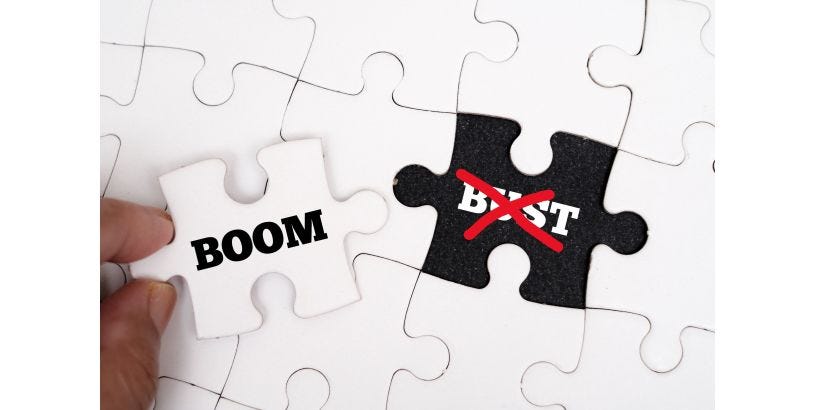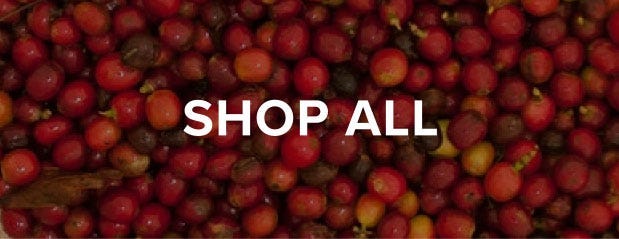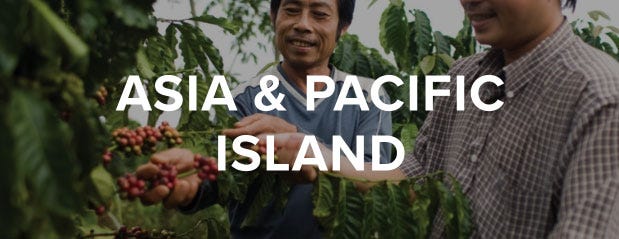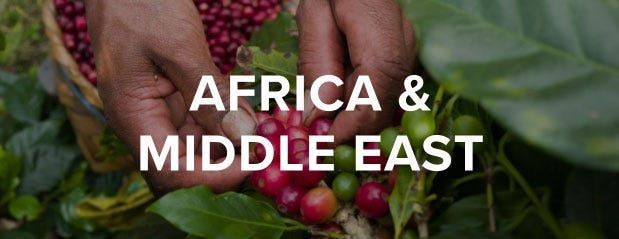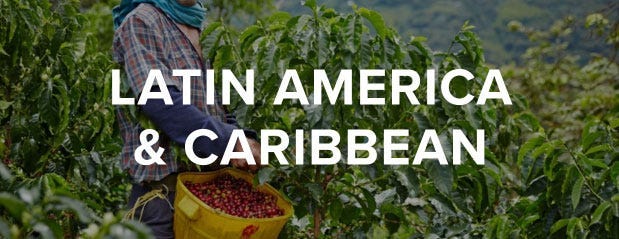Maybe the Bust in Coffee’s Boom and Bust Cycle is Busted
In the 17th century the coffee merchants of Yemen had what basically amounted to a fully transparent marketplace. Well, fully transparent for them. They could stand on the hills above the port of Mokha and count how many foreign ships were in the harbor. Just a few ships, don’t bring a lot of coffee into the city. More ships, more coffee, but never too much coffee.
The Arabian Peninsula had a monopoly on the world’s green coffee supply for 200 years. The coffee producers and merchants of Yemen could control supply against demand to help ensure if not necessarily guarantee they received the prices they wanted. Traders from Europe eventually learned to keep people in Yemen year-round to understand how trade functioned and build relationships. Turns out, it helped if you knew a guy. They also learned to have a presence beyond the port and closer to where the coffee was grown. Nevertheless, as late as 1709, Jean de la Roque was trying to buy coffee in the city of Bayt al Faqih, 100 miles north of Mokha, and he would write that coffee sellers had “the trick of bringing no coffee to market when the price is not that which they like.”
By the time La Roque died in 1745, the majority of the world's coffee supply had shifted to Java. Once the commercial cultivation of coffee was successful in other countries, merchants of the renowned Mokha coffee began to experience some of the same opacity their buyers had experienced for so many years. Rather than negotiating prices with people who had no options outside of Yemen, they had to make deals with people who might indeed have other sources for coffee.
While it’s true that coffee from the port of Mokha remained highly desirable, and relatively expensive into the 20th century—so much so that a great deal more “Mokha” was sold than was ever grown—once the Dutch got up to speed on Java, the game was afoot. Yemen may have remained a player but was no longer the whole game.
With more than one source for coffee, supply was and still is determined by nearly more variables than one can consider. But historically, the largest types of disruptions might well be categorized as agronomic, logistical, political and economic.
Agronomic disruptions include, primarily, direct weather impacts on crops, disease, pests, and the unfolding climate crisis. Logistical disruptions are anything that keeps coffee from being picked, processed, moved to port, loaded on a ship, moved across the water, unloaded, stored, or trucked. These can include but are certainly not limited to wars, civil unrest, worker shortages and strikes, bandits, pirates, container shortages, blocked canals, earthquakes and weather impacts on infrastructure. Political and economic impacts on supply might include producers holding coffee as they attempt to clock the market, capital constraints at origin, and changes to trade policy. I suppose attempts to corner the market, which haven’t seriously been a thing for over 100 years, would fit here too along with hiding, hoarding, or burning coffee.
We should remember that as far as the “the market” is concerned, tight supply doesn’t necessarily mean, strictly speaking, that there is not enough green coffee in the world. In the case of logistics, politics, and economics, it typically means that not enough green coffee is in the right places, the places where it can be roasted, sold, and consumed.
In any case and anyway, sometimes the world wants to drink more coffee than is readily available or perceived as available soon and just like you learned in that economics class–the economics class where you also learned you didn’t want to be an economist–prices go up.
What happens next depends, once again, on many many things. Is there really a war, or just the rumor of war? Is there really a frost, or just the rumor of frost? Are the dock workers really going to strike? History is filled with blips in price that are a result of rumors or bad guesses or vague anticipations or outright attempts to misinform. Relatively speaking, in the scope of history, the resulting higher prices last as long as a rumor lasts on the wind.
More often than not there is more than enough coffee available. How much more, real or perceived, is a dance between supply and demand and prices are what the dance looks like. One hopes for a smooth and stable waltz and fears the whiplash of a jitterbug.
Occasionally, in the scope of history, higher prices are sustained for a significant period of time. The definition of “significant” can be subjective but let’s just say a level and a period of time that is relatively unusual and requires businesses to respond. More than a blip. As of mid-April, 2025, coffee has been trading above $2.00 for over a year, approaching 300 trading days. For a full 10 years before that, New York had closed above $2.00 just 300 times, or 12% of more than 2,550 trading days.
Generally speaking, sustained shifts come from genuine structural changes, i.e. ready supply is actually low or soon to be low. Sudden drops in supply can be real events with lasting consequences and regardless of the underlying cause, coffee producers have traditionally responded to sustained higher prices by planting more coffee and/or improving husbandry of existing trees or those that had been previously neglected. This response is, as so many economic decisions are, logical on a micro level and illogical on a macro level.
If I have more coffee to sell at a good price I will make more money; but if everyone is thinking the same thing I’m thinking (hint: they are) and everyone ends up with more coffee to sell, demand will at some point be satiated and prices will go back down. And thus the adage, the cure for high prices is high prices. What’s worse, my costs have increased because I’m producing more coffee so if I continue harvesting the same amount of coffee I’ll be making less money than ever.
Here we have, in short, the boom-and-bust cycle of coffee.
If the coffee growing world could act in cooperation–which they have tried to do countless times throughout coffee’s history and mostly been unsuccessful since coffee escaped Yemen–they would agree not to plant more coffee and make the felt higher price environment the normal price environment.
And as long as we’re dreaming, let’s say everyone in the coffee-growing world steps any growth in supply alongside natural growth in demand. Ah, like Fred Astair and Ginger Rogers. In this imaginary world, prices theoretically remain more than adequate for the producing world and if some reasonable facsimile of price stability is achieved, the consuming world eventually acclimates to the new normal. Balancing supply with demand is a sweet dream, but just a dream, nevertheless.
What if the coffee growing world didn’t really have a choice and could no longer increase supply to the busting point? Maybe the boom-and-bust cycle could become a boom and meh cycle, because why are green coffee prices unusually high right now? The answer is D) All of the Above.
It is generally assumed that the prolonged period of high green coffee prices in the late 1970’s and early 1980’s was inaugurated by a black frost in Brazil, but the frost was only one piece–albeit the largest piece–in a complex puzzle of tight supply.
Fifty years ago, Angola produced 4 million bags of coffee annually and was one of the top five coffee producing countries in the world. Today, Angola doesn’t even come to mind when you think of coffee growing countries in Africa. Due to a civil war in 1975, production dropped by 3 million bags almost immediately and exports would eventually fall 97%. Civil war also impacted coffee production in Ethiopia where exports fell from 1.2 million bags in 1976 to less than 600,000 bags in 1977. There was unrest and a dock workers strike in Kenya in 1975. A 7.5 magnitude earthquake in Guatemala during harvest in 1976 and rust disease in Nicaragua reduced Central American coffee exports by one-third that year. Flooding and landslides in Colombia in 1974 had long-term impacts on transportation infrastructure. All of this on top of the frost in Brazil that killed one-third of the coffee trees.
Let’s be a little rebellious, if a bit tedious, and not use the phrase “a perfect storm.” Let us instead use the actual meteorological name for the Halloween Nor’easter of 1991 upon which the book and subsequent movie, A Perfect Storm, were based. Technically, that storm was an “extratropical cyclone.”
In 1976, the coffee industry experienced an extratropical cyclone. Several events came together at the same time to create a period of sustained relatively high prices. Adjusting for inflation and using annual averages, a $4.00 c-market was the lowest price experience from 1976 to 1986. Prices were often much higher.
Arguably, of course, because these things are open to so much subjective interpretation, it might be that an extratropical cyclone at a level of severity we have not seen since the 1970’s is being visited upon the coffee industry right now.
We are facing true agronomic issues, very real logistical challenges, and somewhat extraordinary geopolitical/economic pressures. Not enough green coffee is readily available where and when it needs to be available and there is little relief evident on the horizon.
The wrinkle that is new and makes this storm different is that coffee producers may not be able respond as they have in the past, at least not at the same level of intensity, by planting more coffee to the busting point, due to changes in climate conditions. Coffee growing with current varieties is slowly migrating to places it might be grown at volumes and prices we don't recognize.
It seems like new coffee must become available at some point, including, perhaps, coffee grown in places that haven’t grown coffee in the past; but maybe not enough to pull prices below $2.00 where many specialty coffee roasters learned to do business. The uncertainty in coffee remains as uncertain as international politics and economics at the moment.
It’s a rats nest nearly impossible to untangle but suffice to say that attempts to surmount these pressures, which show no sign of going away anytime soon, are unlikely to bear-wrestle prices down to previously established comfort zones any time soon. For coffee roasters, a sustained shift means raising prices. We won’t be cost cutting our way through this. If we’re sitting at a new base camp, our only option is to acclimatize. Not long ago, thinking of $3.00 as a low price was impossible, but that shift in perspective is already happening. If the bust in coffee’s boom and bust cycle as we’ve experienced it in the past is busted, maybe $3.00 is the new $1.00.


